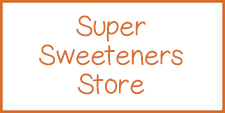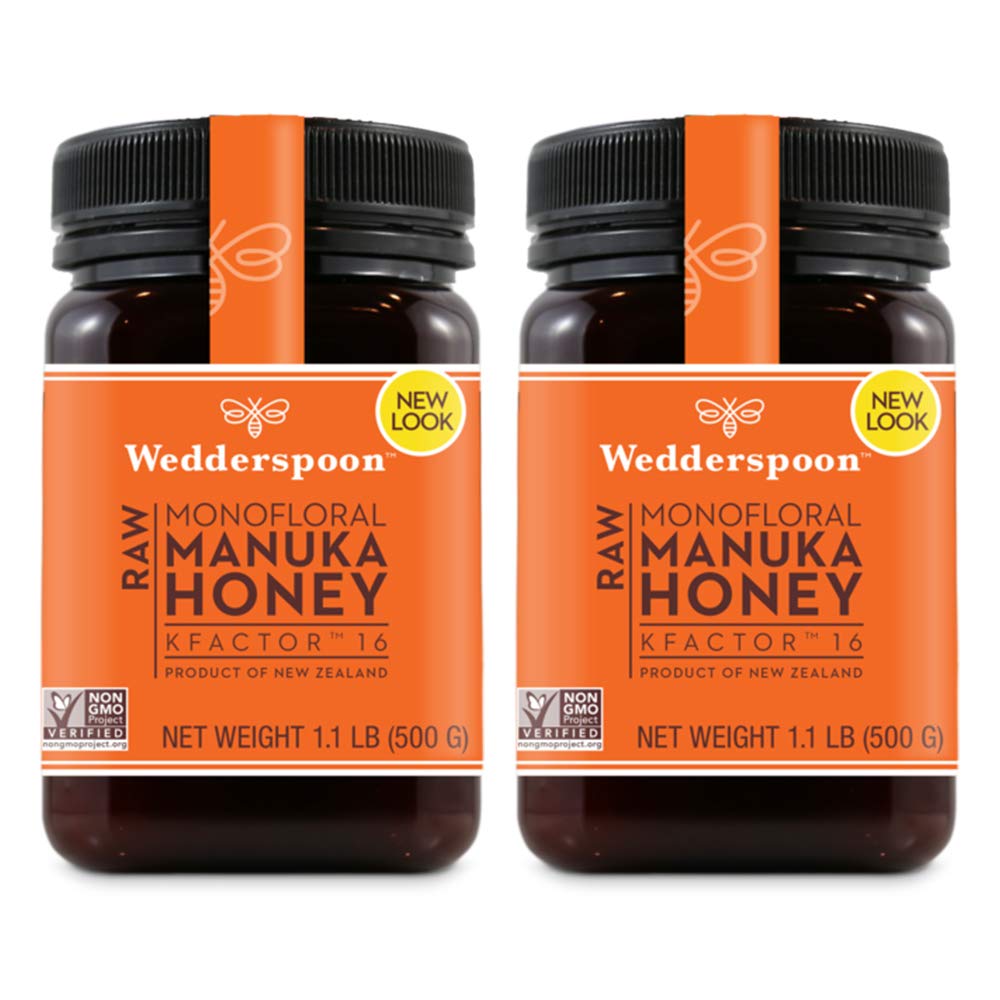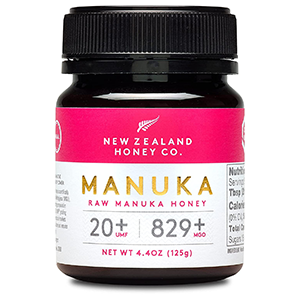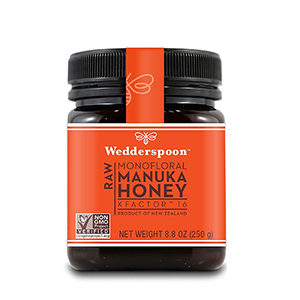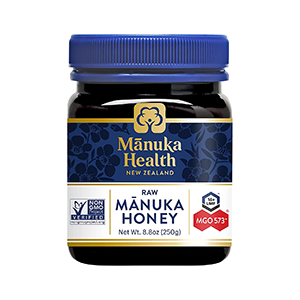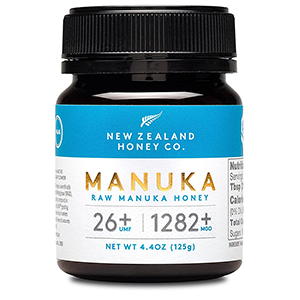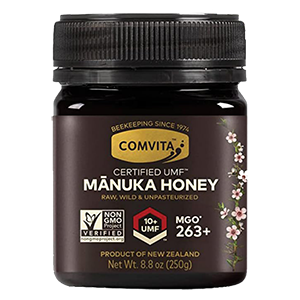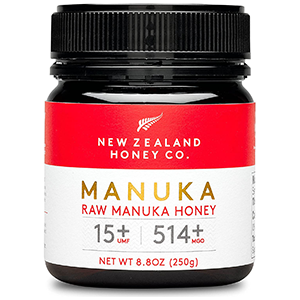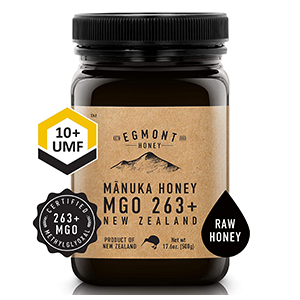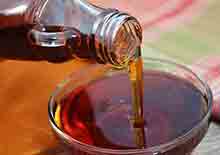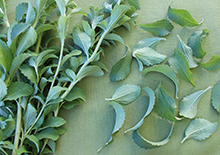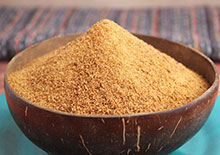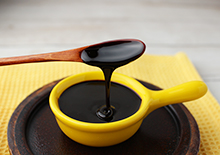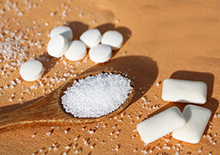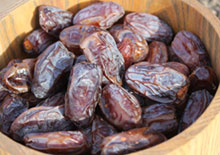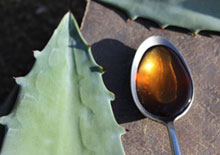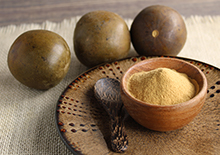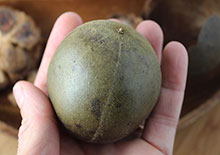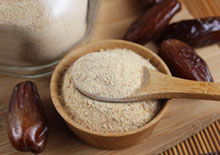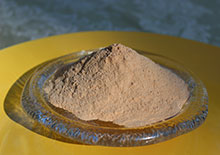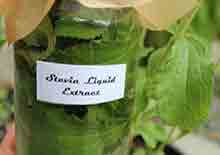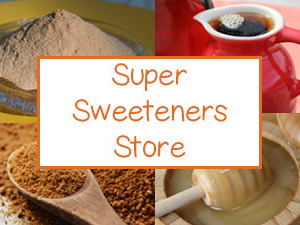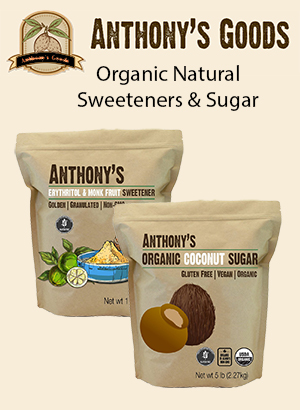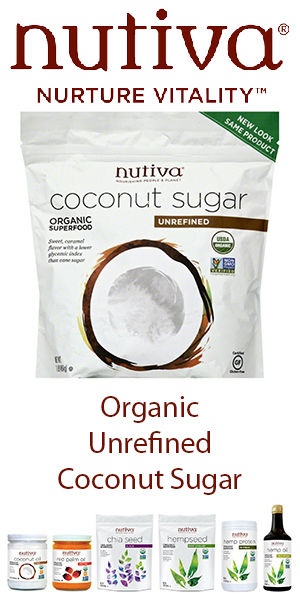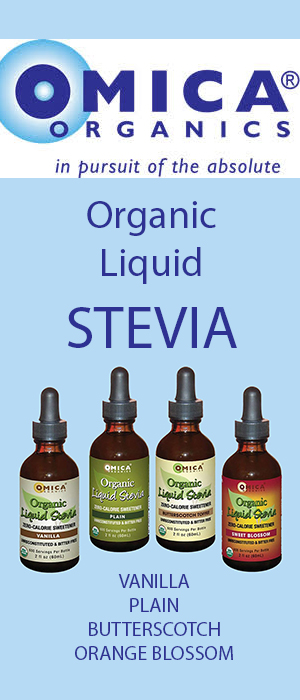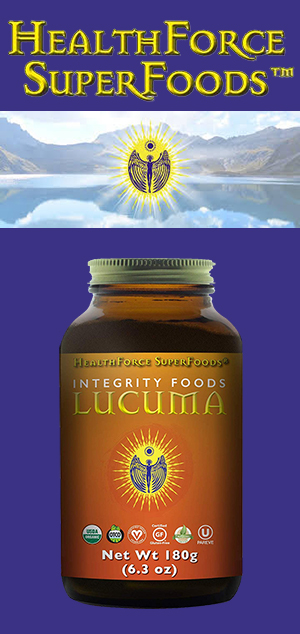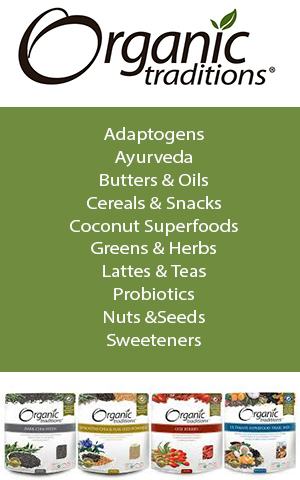- Home
- Sweeteners
- Manuka Honey Benefits
Manuka Honey Benefits, The Superfood from New Zealand
What is Manuka Honey? | Manuka Vs Regular Honey | Benefits | Grading and Certification | Purchasing Genuine | How to Use | Precautions | Shop
What is Manuka Honey?
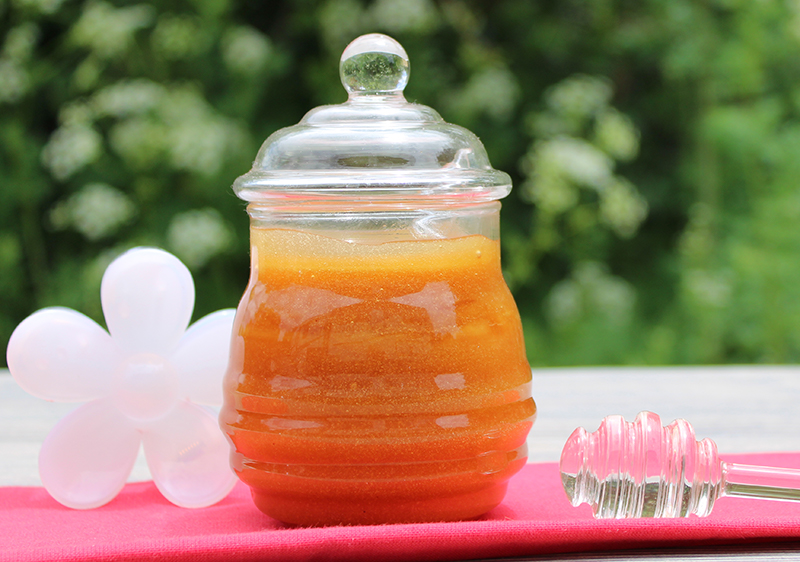
Manuka honey is made by honeybees that source their nectar from the manuka tree flowers native to New Zealand and southeastern Australia.
The manuka species, Leptospermum scoparium, is a bush-like tree with prickly leaves and large seed capsules. It is one of the first plants to grow on wild land that has been cleared.
Table of Contents
What is Manuka Honey? | Manuka Vs Regular Honey | Benefits | Grading and Certification | Purchasing Genuine | How to Use | Precautions | Shop
However, just because honey is labeled "manuka honey" does not mean it is the real deal. New Zealand is the main producer of mānuka honey with strict guidelines on all exported manuka honey products.
We'll discuss more about how to purchase authentic manuka honey as well as info about UMF™ and MGO grading standards.
But first, how is manuka honey different than regular honey and what are the health benefits that give it the New Zealand Superfood title?
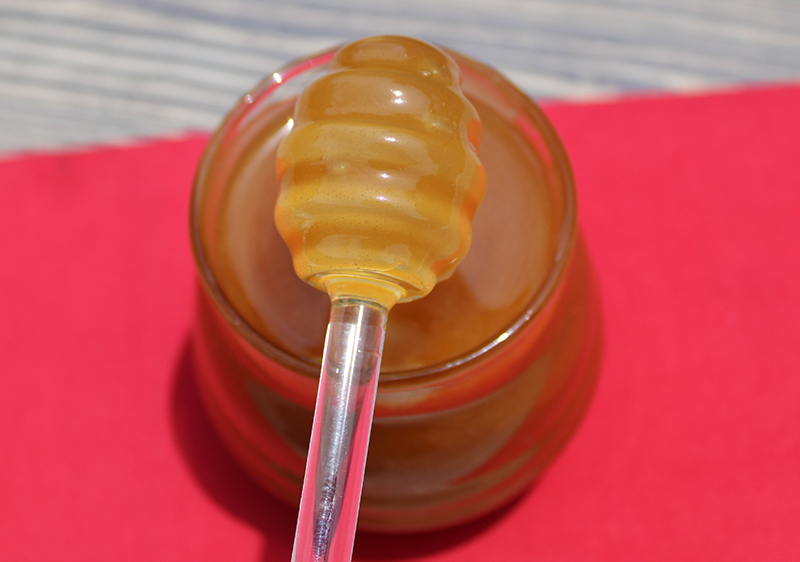
Manuka Honey Vs Regular Honey
Nutraceutical Compounds
Raw and Unpasteurized
Unique Taste and Texture
Manuka Contains Other Nutraceutical Compounds
Manuka honey is made up of distinct micronutrients and elements that work synergistically to produce a multifaceted superfood sweetener or dietary supplement.
When honeybees collect nectar from the manuka flower, their honey is considered way more potent than the average honey.
While all raw honey, no matter the nectar source, contains healthful ingredients, like propolis, enzymes and hydrogen peroxide, manuka has a different level of nutraceutical potency.

In 1981, it was Dr. Peter Molan, Associate Professor in Biochemistry at Waikato University, who first discovered manuka's benefits that set it apart from other types.
Originally called "non-peroxide antibacterial activity" (NPA), (because its properties aren't dependent on peroxide), further research measured high levels of these naturally occurring medicinal constituents that have much stronger antibacterial qualities.
Manuka honey benefits to humans come mostly from three compounds especially concentrated in manuka nectar and the honey our bee friends create.
- MGO (methylglyoxal)
- DHA (dihydroxyacetone)
- Leptosperin
Manuka also contains four other phenolic acids (3-Phenyllactic acid, 2-Methoxyacetophenone, 2-Methoxybenzoic acid and 4-Hydroxypheyllactic acid) which add to its antioxidative health potentials.
Manuka is Not Pasteurized and Always Tested
True manuka honey is always raw or unpasteurized to preserve its active medicinal components.
Other types of honey can either be raw or pasteurized. They can likewise come from many different flower sources and some unpasteurized honey’s are actually of a very high quality.
Manuka honey can be monofloral (manuka only) or multifloral (manuka and other species), however, true manuka is always tested for its higher content of manuka-specific components such as leptosperin or lepteridine.
Manuka Has A Unique Taste and Texture
Manuka honey has a strong floral taste. From our experience tasting two different New Zealand grades, both seemed to have a similar complex floral yet earthy flavor with some underlying bitterness. The darker the honey, the more intense the taste spectrum seems to be.
It is often "creamed" as the straight liquid raw honey can tend to crystalize. This process preserves nutrients and enzymes, yet thickens the quality, providing a smooth enjoyable texture.
Manuka Honey Benefits
METHYLGLYOXAL or MGO is the often discussed major component in the honey that contributes to its powerful antimicrobial activity. It is often the one most tested and referenced on manuka products.
When high MGO honey is consumed, it can help soothe a sore throat, lessen sinus issues, improve digestion and/or support immune health in general. It's frequently good to take in supplemental amounts if you feel the onset of a cold or flu.
As a folk remedy, it is often referred to it as a type of "natural antibiotic" although it shouldn't be used to self-treat major ailments that need medical attention.
Manuka's mentioned phenolic acids are likewise responsible for their potent benefits as antioxidants that support everyday well-being.
While the Māori people indigenous to New Zealand existed before the introduction of the European honeybee, they used the pronounced "mānuka" leaves and bark in therapeutic preparations, which interestingly correlate with the honey's similar uses.
Its disinfecting and antiseptic attributes make it suitable for topical use on minor wounds, cuts, or skin issues like acne or eczema.
Also being a type of alternative sweetener, it is naturally very high in sugar content making it an energizing food source or sugar substitute for some individuals.
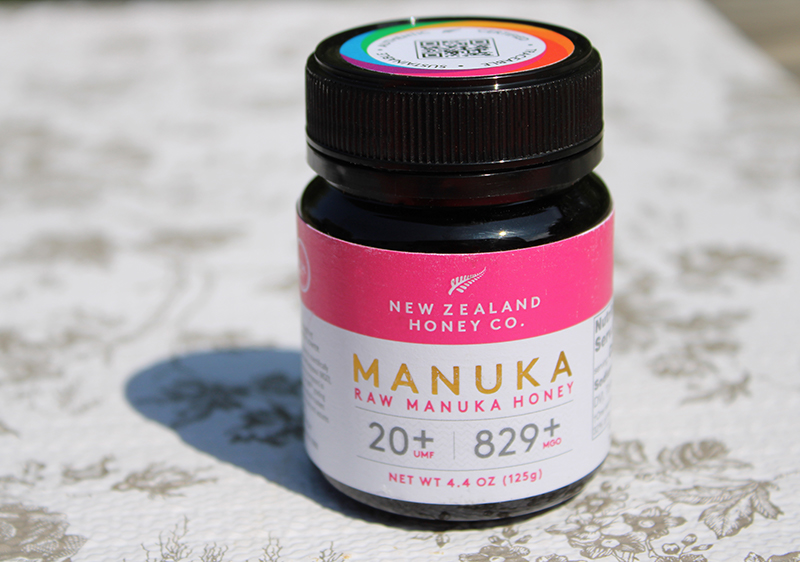
Grading and Certification of Authenticity
The New Zealand government's Ministry for Primary Industries requires by law that all exported manuka honey must meet standards for it to receive an official "manuka" label of authenticity.
They do this via testing to accurately identify that all manuka honey produced and packed in the country is pure and genuine before it leaves New Zealand.
This is sometimes paired up with other independent certified grading systems. The most popular being the UMF™ (or Unique Manuka Factor) which is set by the New Zealand UMFHA or Unique Manuka Factor Honey Association.
Unique Manuka Factor
and MGO Grading System
The UMF™ rating method measures the honey according to the presence of four quality markers: MGO (methylglyoxal), DHA (dihydroxyacetone), leptosperin as well as HMF (hydroxymethylfurfural) to guarantee low temp processing.
Basically, the higher the UMF, the more MGO (methylglyoxal) and the greater the overall nutraceutical quality and usually price tag.
Honey with a greater than UMF 16+ is considered a superior high-grade manuka product. However, a lower score of UMF 6+ still indicates quality, it's just not as potent. The MGO number listed represents the milligrams per kilogram of honey. So, for example, 829+ means there is 829 milligrams MGO per kilogram.
When it comes to UMF or MGO labeling, it can get a bit confusing because DHA slowly converts to MGO as the honey ages (*), therefore higher amounts can indicate the potential for greater MGO hence the plus (+) symbol next to UMF or MGO on jar labels.
In Australia, genuine manuka honey products are regulated by the Australian Manuka Honey Association (AMHA).
Purchasing Genuine Manuka Honey
When purchasing manuka honey it's important that you check labeling to ensure you have the real deal. Many counterfeits are using the "manuka" name that could be from other flower sources or are adulterated in some way with other low-quality honey or syrups.
Things to look for when buying authentic manuka honey:
- The country of origin is New Zealand (or Australia).
- It is produced, packed and labeled in these countries.
- Quality brands offer non-GMO and glyphosate-free certifications.
- Look for the official Fernmark seal or UMF™ seal and/or MGO grade ratings on jars.
- Other labeling may also include KFactor grading along with the Fernmark seal.
How to Use
The serving size of manuka honey depends on the quality. The higher the MGO the less you would typically use. These types are more for supplemental purposes.
Lower MGO manuka's however can be used like regular honey to sweeten low-temp foods or drinks.
Precautions:
Manuka honey is best avoided by diabetics, if you’re adhering to a low-sugar diet or allergic to bee products. Manuka honey is not safe for infants because of the live enzymes and bacteria content. Consult your health professional before use if you're pregnant, nursing, taking any medications or if you have a serious health condition.
Shop Related Products (About Affiliates & Amazon Associate Paid Links)
Affiliate Disclaimer: This section contains affiliate product links. If you make a purchase through our recommended links, we receive a small commission at no additional cost to you. Thanks for the support.
